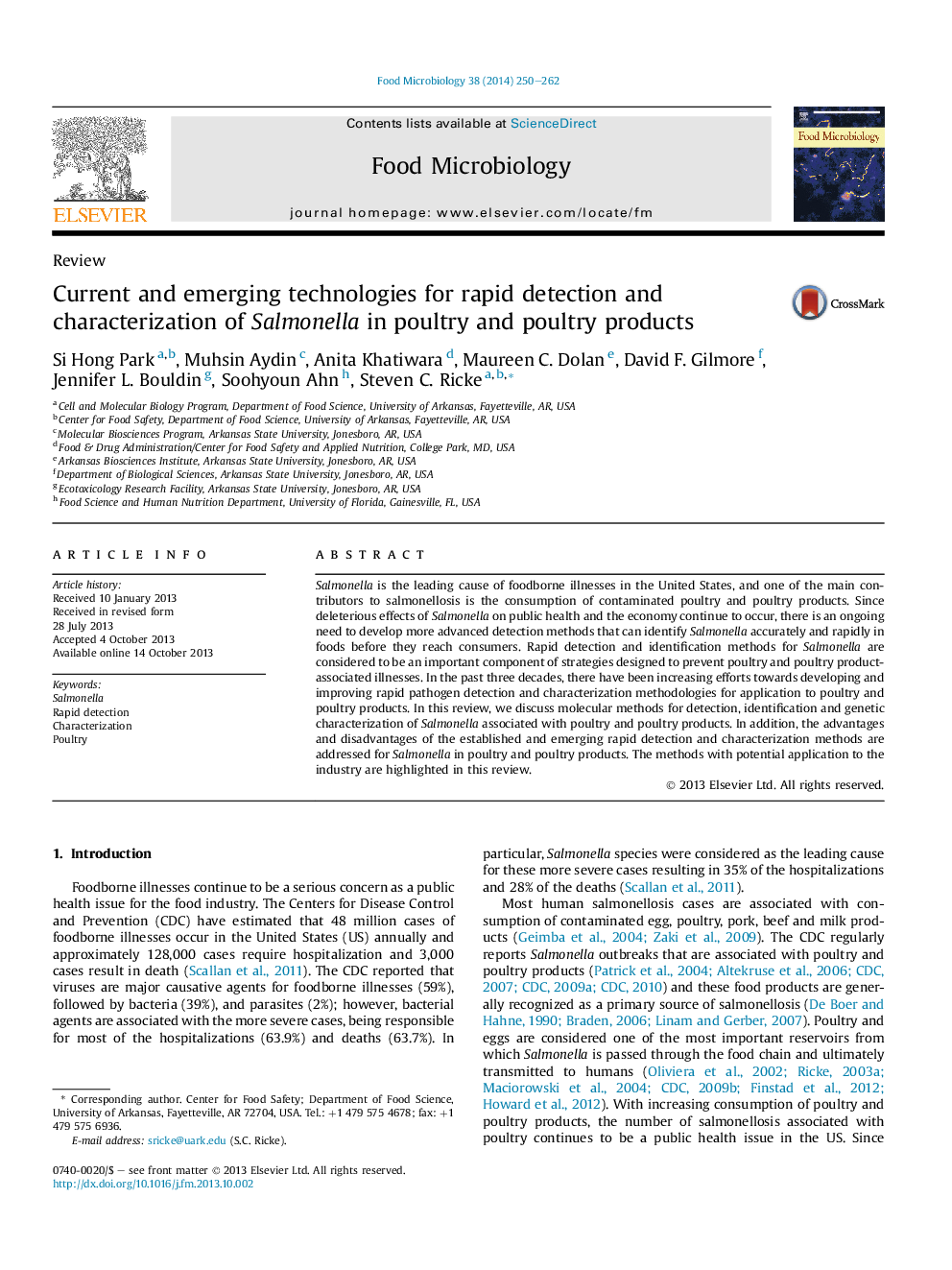| Article ID | Journal | Published Year | Pages | File Type |
|---|---|---|---|---|
| 4362941 | Food Microbiology | 2014 | 13 Pages |
•We reviewed rapid detection and identification methods for Salmonella in poultry.•We highlighted advantages and disadvantages of these methods.•We underlined the importance of early detection of Salmonella from poultry.
Salmonella is the leading cause of foodborne illnesses in the United States, and one of the main contributors to salmonellosis is the consumption of contaminated poultry and poultry products. Since deleterious effects of Salmonella on public health and the economy continue to occur, there is an ongoing need to develop more advanced detection methods that can identify Salmonella accurately and rapidly in foods before they reach consumers. Rapid detection and identification methods for Salmonella are considered to be an important component of strategies designed to prevent poultry and poultry product-associated illnesses. In the past three decades, there have been increasing efforts towards developing and improving rapid pathogen detection and characterization methodologies for application to poultry and poultry products. In this review, we discuss molecular methods for detection, identification and genetic characterization of Salmonella associated with poultry and poultry products. In addition, the advantages and disadvantages of the established and emerging rapid detection and characterization methods are addressed for Salmonella in poultry and poultry products. The methods with potential application to the industry are highlighted in this review.
